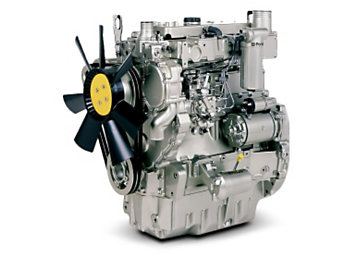Emissions testing
Research and development fuels the innovation in every Perkins engine. We understand how important engine performance and reliability are to our customers, so we are investing in the world class facilities, skills and knowledge required to develop and rigorously test products that deliver exceptional performance, no matter how demanding the operating environment.
Investment in research and development is at the heart of the Perkins philosophy and it is the driving force behind the engines we deliver today and those we are developing for tomorrow.Every day a dedicated Perkins engineering team, deployed across three continents, provides a global perspective that shapes our product development activities.
The insights our engineers gain from supporting customers in the field are fed back to support a continuous cycle of improvement.
What does this mean for you, the Original Equipment Manufacturer (OEM)? You can be assured that competitive advantage is designed into our products.
Investing in facilities
Our Engine Research and Development Centre features the latest cutting edge facilities, including:
- General and advanced performance test cells
- Certification test cells
- Endurance beds
- Tilt bed
- Cold and hot ambient test chambers testing both hot and cold temperatures,as well as simulating high altitudes
The use of real machines throughout development also enables us to analyse how our engines will really perform in the field. To do this we use a five-acre test site to prove machine endurance and performance, alongside a machine workshop with engine installation capabilities.
Designing out risk
As the OEM you expect an engine that delivers high performance, exceptional efficiency and built-in quality. To make this happen our engine validation process starts even before the first design appears on the Computer Aided Design (CAD) screen.
We use robust processes including integrated Failure Mode and Effects Analysis (FMEA) to identify potential causes of failure. This includes extensive analysis of in-machine duty cycle, reliability and durability data, supported by industry-leading tools to model the potential risk to new technologies or design features. We also use a comprehensive range of physical validation techniques to validate our engines for all operating conditions covering different machine installations. This is supported by a world class engine test facility capable of simulating machine operating cycles at varying engine angle of operation, altitude and temperature while ensuring that EU Stage IV/U.S. EPA Tier 4 Final emissions standards are met.
Rigorous testing programmes
The Perkins machine testing regime encompasses several thousand hours of cold weather testing, typically within the Arctic Circle. At the other extreme our engines also undergo testing at temperatures of 48°C with minimum cooling.
The final stage of the validation process is leveraged through the Perkins application teams, whose worldwide resources work with OEMs to support machine development programmes. Data is fed back into the FMEA process to further enhance product confidence.
The result
Our validation programme enables you to develop your machine concurrently with the engine, safe in the knowledge that every operating detail has been factored into the design. You also have the assurance that thousands of hours of testing have gone into delivering the most efficient and reliable solution possible.
“The true benefit of our engine validation work is the value that it brings to customers in saving time and cost during development.” |
Fast facts
- Robust facilities and processes that add value for our customers
- Cold weather testing ensures that our engines can operate at temperatures of -38°C
- A validation programme that enables the machine and engine to be developed concurrently

